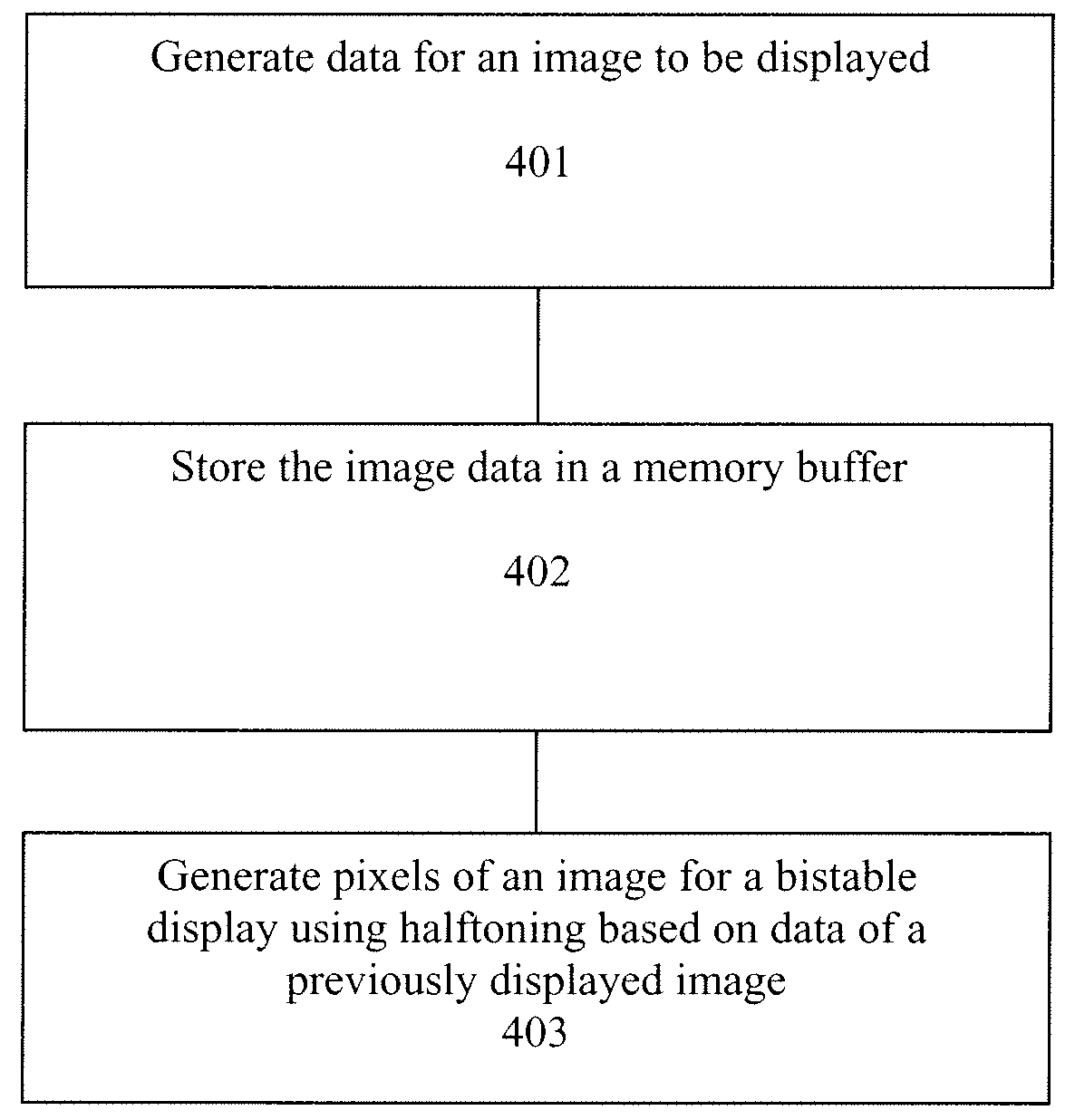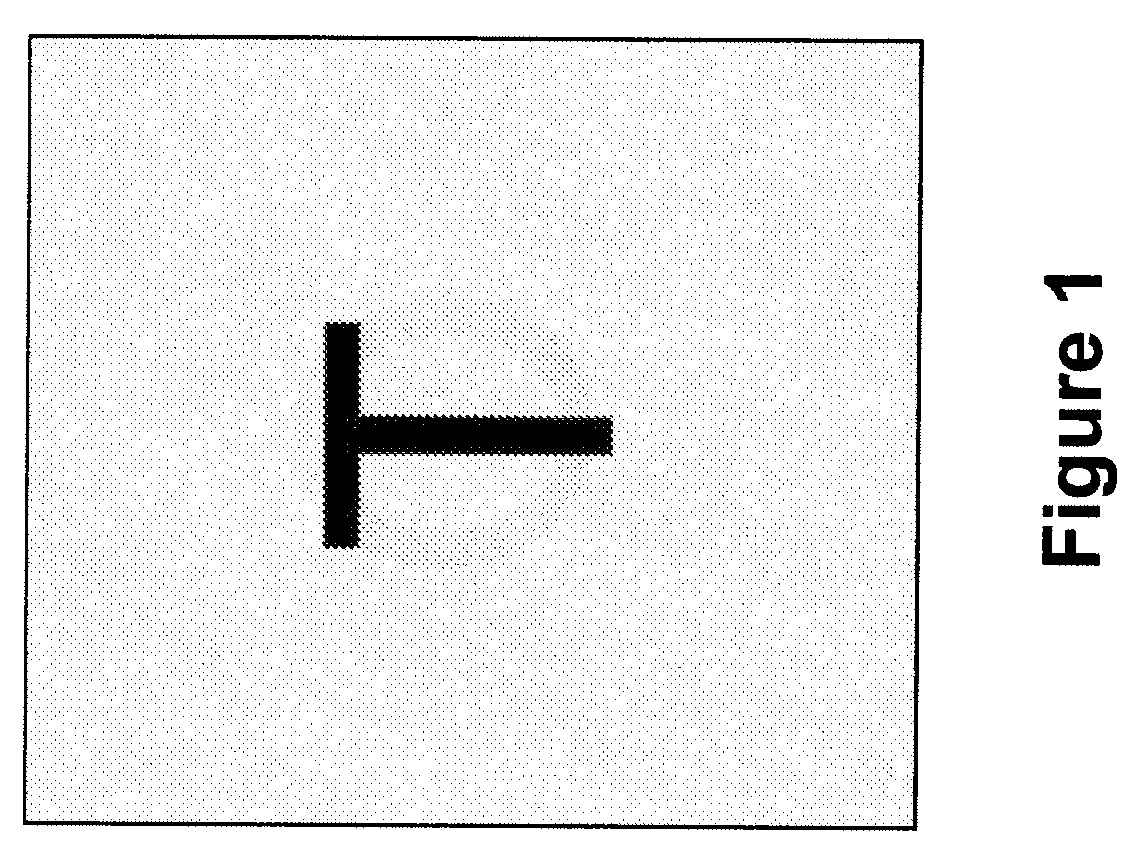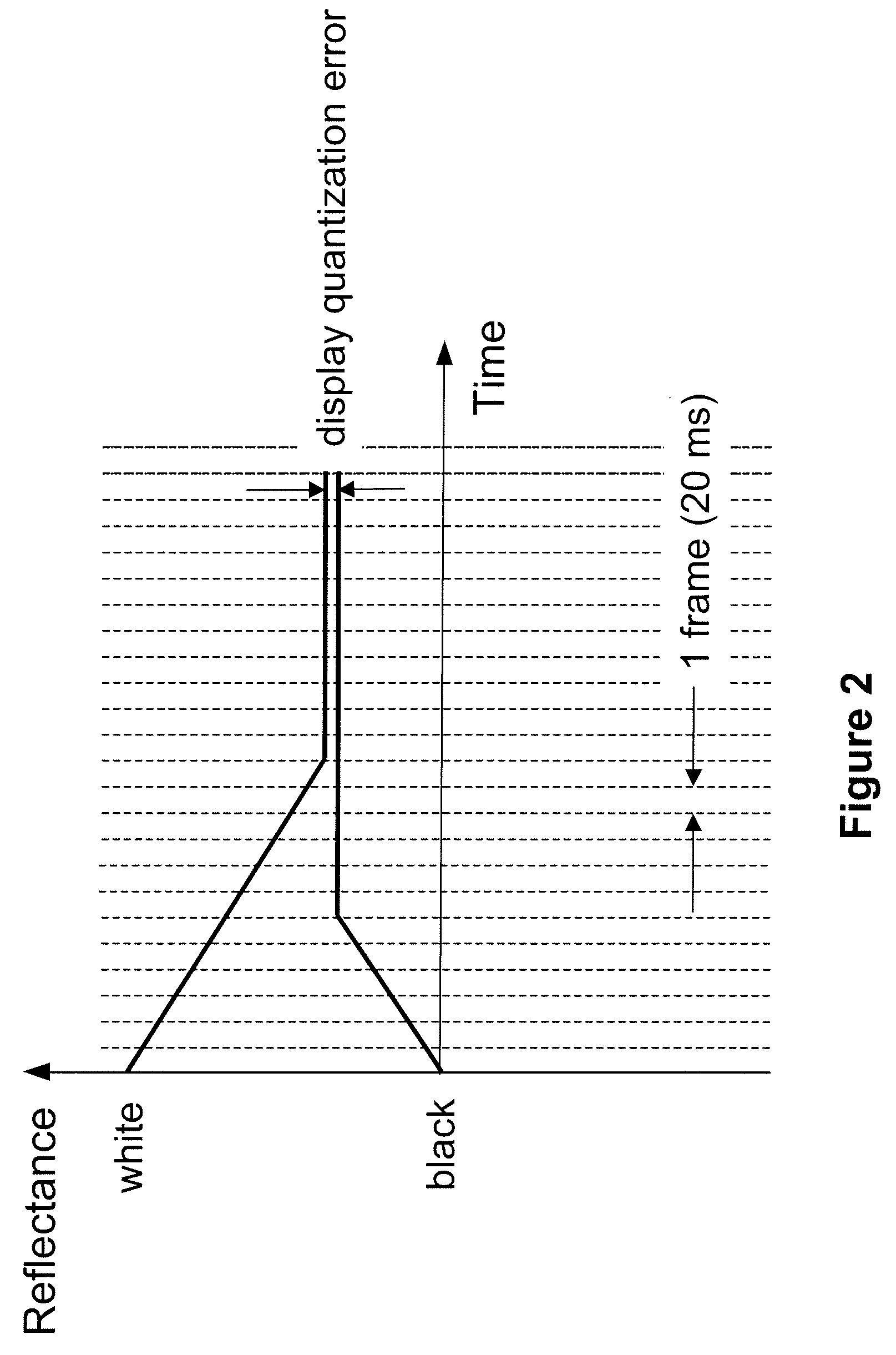Method for reducing image artifacts on electronic paper displays
a technology of electronic paper display and image artifact, which is applied in the field of image processing, can solve the problems of introducing severe imaging artifacts on the screen, ghosting is a display quantization error of lightness between, and the frame update rate is impractical for high-resolution active matrix displays today
- Summary
- Abstract
- Description
- Claims
- Application Information
AI Technical Summary
Benefits of technology
Problems solved by technology
Method used
Image
Examples
Embodiment Construction
[0023]An image processing method for reducing imaging artifacts on bistable displays (e.g., electrophoretic displays) is described. These artifacts may be due to ghosting. In one embodiment, imaging artifacts are reduced by performing halftoning on images (e.g., a grayscale image) that are to be displayed by taking into account the previously displayed images. In one embodiment, each input image is converted to a dithered output image for display by using an image sequence correlated error diffusion algorithm described herein.
[0024]In one embodiment, error diffusion is used for halftoning, and the error diffusion algorithm takes into account each previous output pixel along with the current output pixel. The predicted display error of each gray level transition is included into the feedback loop of the error diffusion filter. In one embodiment, the display error for each gray level state transition, which is fed into the error diffusion feedback loop, is generated using a look-up ta...
PUM
 Login to View More
Login to View More Abstract
Description
Claims
Application Information
 Login to View More
Login to View More - R&D
- Intellectual Property
- Life Sciences
- Materials
- Tech Scout
- Unparalleled Data Quality
- Higher Quality Content
- 60% Fewer Hallucinations
Browse by: Latest US Patents, China's latest patents, Technical Efficacy Thesaurus, Application Domain, Technology Topic, Popular Technical Reports.
© 2025 PatSnap. All rights reserved.Legal|Privacy policy|Modern Slavery Act Transparency Statement|Sitemap|About US| Contact US: help@patsnap.com



